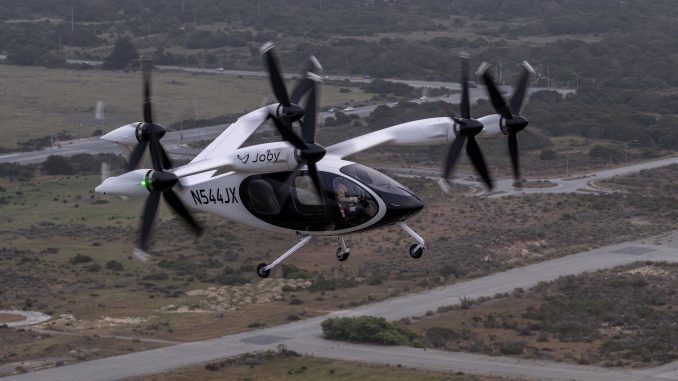
Joby Aviation has successfully completed flights with a full transition from vertical to cruise flight, and back again, with a pilot onboard.
Transitioning from vertical to horizontal flight is a key design attribute of the Joby aircraft, allowing it to take-off and land vertically like a helicopter, while maintaining the efficiency and speed of a conventional, fixed-wing aircraft in forward flight.
Joby demonstrated remotely-piloted transition first, completing the first transition of a full-scale, prototype aircraft in 2017. Since completing the first full transition flight with a pilot onboard on April 22, 2025, Joby has completed multiple transition flights with three different pilots at the controls, as it sets out to routinely perform inhabited testing of an electric air taxi from hover to wingborne flight.
The first pilot-on-board transition was flown by Joby Chief Test Pilot James “Buddy” Denham and took place at Joby’s flight test facility in Marina, California. Denham said the aircraft “flew exactly as expected, with excellent handling qualities and low pilot workload”.
In preparation for achieving pilot-on-board transition flight, Joby completed thousands of tests in the its Integrated Test Lab, a ground-based facility which replicates all of the major systems of the aircraft, allowing the team to test propulsion units, actuators, and other aircraft hardware and software that is identical to the company’s prototype aircraft before taking to the air.
Joby also completed a series of flight tests at Edwards Air Force Base designed to confirm the redundancy present throughout the aircraft’s design, with remote, ground-based pilots handling simulated motor-out, battery-out, and other potential in-flight events. “In all cases, the aircraft performed as expected, enabling Joby pilots to continue safe flight and a controlled, vertical landing, even when relying on just four of the aircraft’s six propellers,” the company said on April 29.
Joby’s all-electric air taxi is designed to transport a pilot and up to four passengers at speeds of up to 200 mph (321 km/h).
For more information

